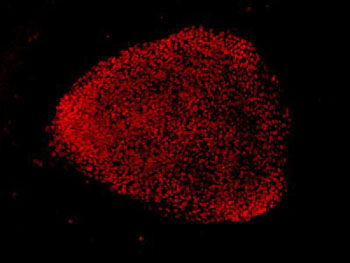Gene Editing Technique Corrects Patient-Derived Stem Cell Mutation
By LabMedica International staff writers
Posted on 08 Feb 2016
The relatively new CRISPR/Cas9 gene editing technique was used to correct a mutation in the genome of stem cells derived from skin cells taken from patients with the hereditary optical disorder retinitis pigmentosa.Posted on 08 Feb 2016
CRISPRs (clustered regularly interspaced short palindromic repeats) are segments of prokaryotic DNA containing short repetitions of base sequences. Each repetition is followed by short segments of "spacer DNA" from previous exposures to a bacterial virus or plasmid. CRISPRs are found in approximately 40% of sequenced bacteria genomes and 90% of sequenced archaea. CRISPRs are often associated with cas genes that code for proteins related to CRISPRs. Since 2013, the CRISPR/Cas system has been used in research for gene editing (adding, disrupting, or changing the sequence of specific genes) and gene regulation. By delivering the Cas9 enzyme and appropriate guide RNAs into a cell, the organism's genome can be cut at any desired location. The conventional CRISPR-Cas9 system is composed of two parts: the Cas9 enzyme, which cleaves the DNA molecule and specific RNA guides (CRISPRs) that shepherd the Cas9 protein to the target gene on a DNA strand.

Image: Skin cells from a patient with X-linked retinitis pigmentosa were transformed into induced pluripotent stem cells and the blindness-causing point mutation in the RPGR gene was corrected using CRISPR/Cas9 (Photo courtesy of Dr. Vinit Mahajan, University of Iowa).
Investigators at Columbia University Medical Center (New York, NY, USA) and the University of Iowa (Iowa City, USA) tested whether CRISPR/Cas9 could be used in patient-specific induced pluripotent stem cells (iPSCs) to precisely repair a point mutation in the RPGR (X-linked retinitis pigmentosa GTPase regulator) gene that causes X-linked retinitis pigmentosa (XLRP).
The investigators cultured fibroblasts from a skin-punch biopsy of an XLRP patient and transduced them to produce iPSCs carrying the patient’s specific mutation. The iPSCs were then treated with CRISPR guide RNAs, the Cas9 endonuclease enzyme, and a donor homology RNA template.
Results published in the January 27, 2016, online edition of the journal Scientific Reports revealed that despite the gene’s repetitive and guanine/cytosine-rich sequences, 13% of RPGR gene copies showed mutation correction and conversion to the wild-type allele.
The investigators believe that this was the first report using CRISPR to correct a pathogenic mutation in iPSCs derived from a patient with photoreceptor degeneration. They suggest that this important proof-of-concept finding supports the development of personalized iPSC-based transplantation therapies for retinal disease.
"Our vision is to develop a personalized approach to treating eye disease," said contributing author Dr. Stephen Tsang, associate professor of ophthalmology, pathology, and cell biology at Columbia University Medical Center. "We still have some way to go, but we believe that the first therapeutic use of CRISPR will be to treat an eye disease. Here we have demonstrated that the initial steps are feasible."
Related Links:
Columbia University Medical Center
University of Iowa










 (3) (1).png)


